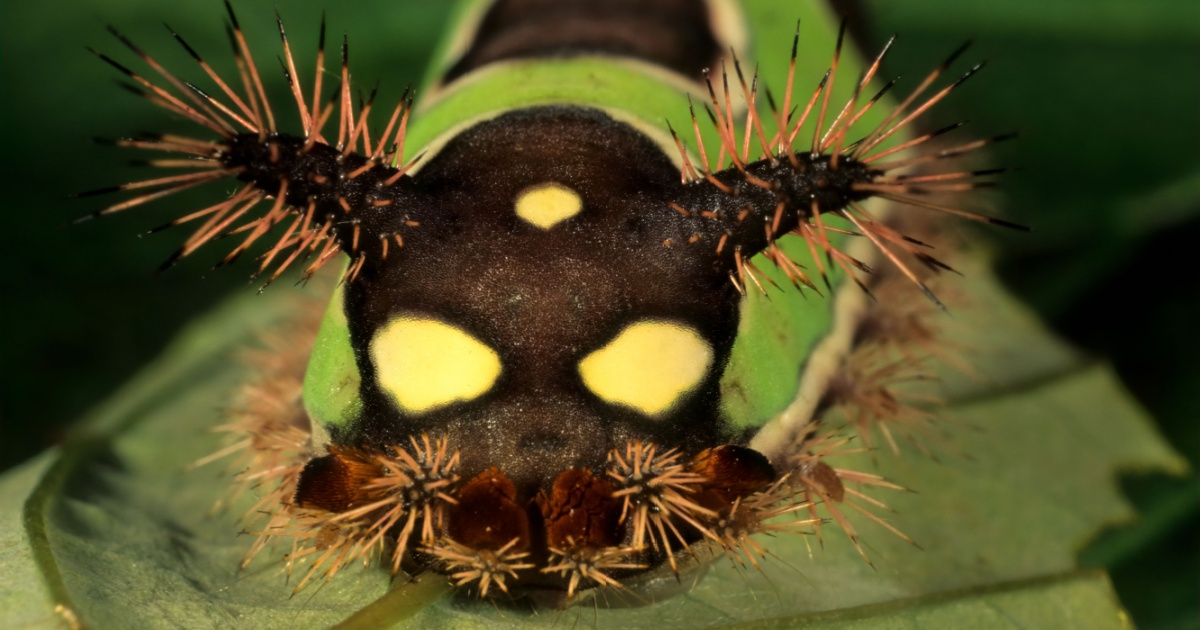Caterpillars have the reputation of being harmless larvae who have yet to become butterflies and moths. But don’t underestimate these partially developed creatures. They come with their own unique biology, including defenses against predators. This includes camouflage, foul-smelling repellents, and venom. However, their arsenal is not reserved for hungry birds, reptiles, amphibians, and larger insects. Sometimes, curious, unsuspecting humans come across venomous caterpillars and receive a terrible and potentially fatal sting.
Child is Hospitalized After Touching a Venomous Caterpillar
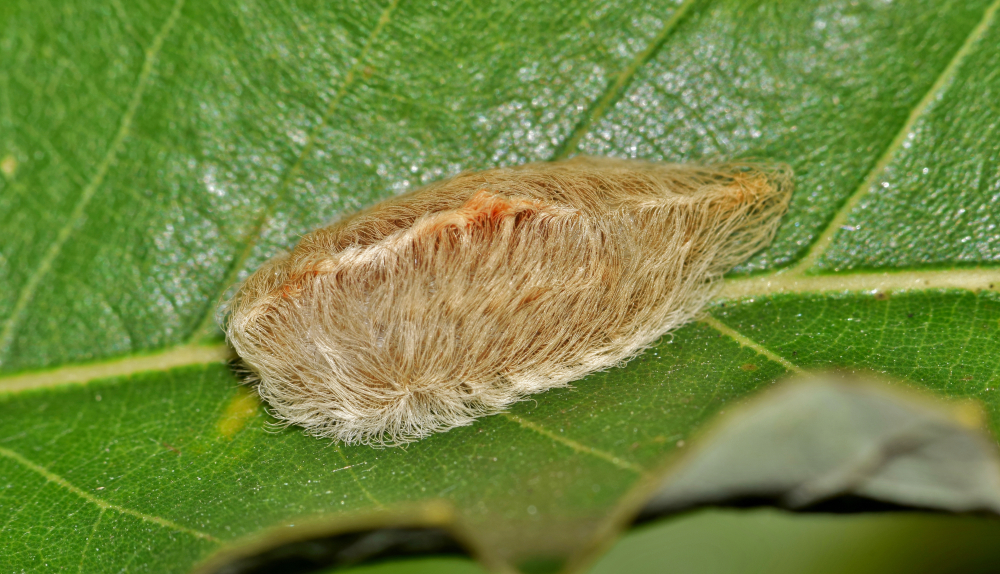
Credit: Shutterstock
The Southern Flannel Moth caterpillar is one of the most venomous caterpillars in the U.S. They are also called asp caterpillars or puss caterpillars, and they are covered in dense hair. So if you see something that looks like a small toupee or fake mustache in the wild, stay far away. The hair covers rows of venomous spines that can leave painful and itchy rashes. In rare instances, people can suffer from allergic reactions, including anaphylactic shock. In these cases, a sting can be fatal.
Fortunately, that was not the case for Adrie Chambers, a 5-year-old who couldn’t move her arm after getting stung by one of these creatures, according to a report from NBC. Before that point, her mother had never heard of such a species living in Texas. Adrie was lucky though, because the daycare staff had quickly used tape to remove the remaining spines from her skin. She suffered from pain and swelling on the site, as well as an upset stomach. However, had the spines stayed in, the reaction could have been more severe, according to Adrie’s doctors.
More Venomous Caterpillars in the U.S.
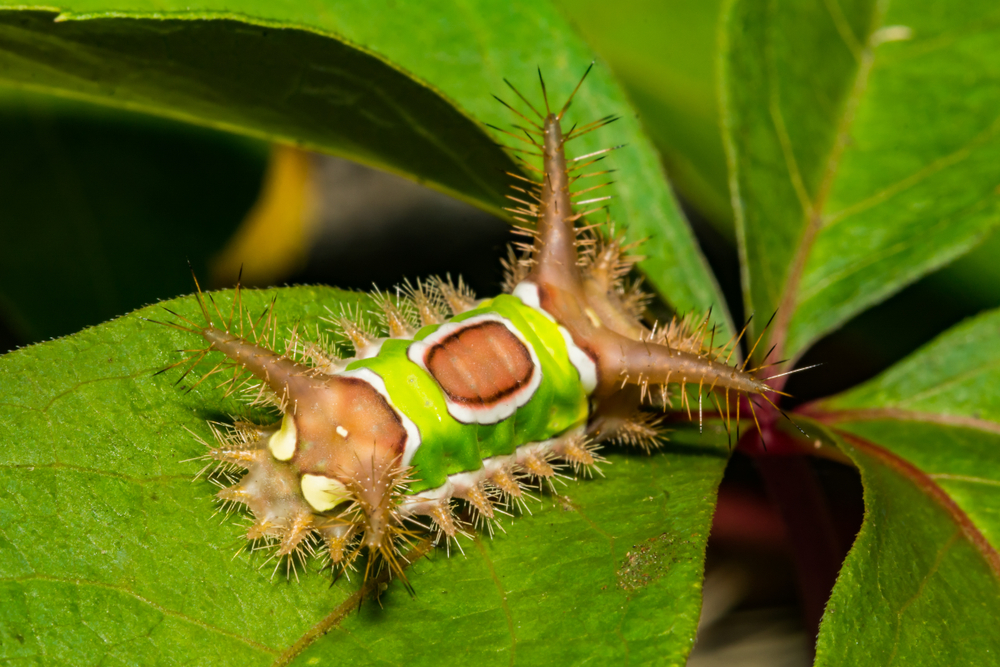
The Southern Flannel Moth caterpillar is the most toxic caterpillar in North America, but it’s not the only one that can inflict painful stings on that continent. The saddleback moth caterpillar is named after the brown, saddle-shaped spot on their green back. They have four spiky knobs on their front and rear, and smaller ones along their bodies. Their stings can cause swelling for up to a week.
Then there’s the browntail moth caterpillar, an invasive species recognized by two white stripes alongside its brown body and two red dots near the tail. This caterpillar’s venomous hairs can become airborne and cause rashes when they reach human skin. They can also cause breathing issues if inhaled. Finally, there’s the hickory tussock moth caterpillar with its striking black and white appearance. They use their venomous hairs while spinning their cocoons, so avoid touching those as well.
What is the Most Dangerous Caterpillar?
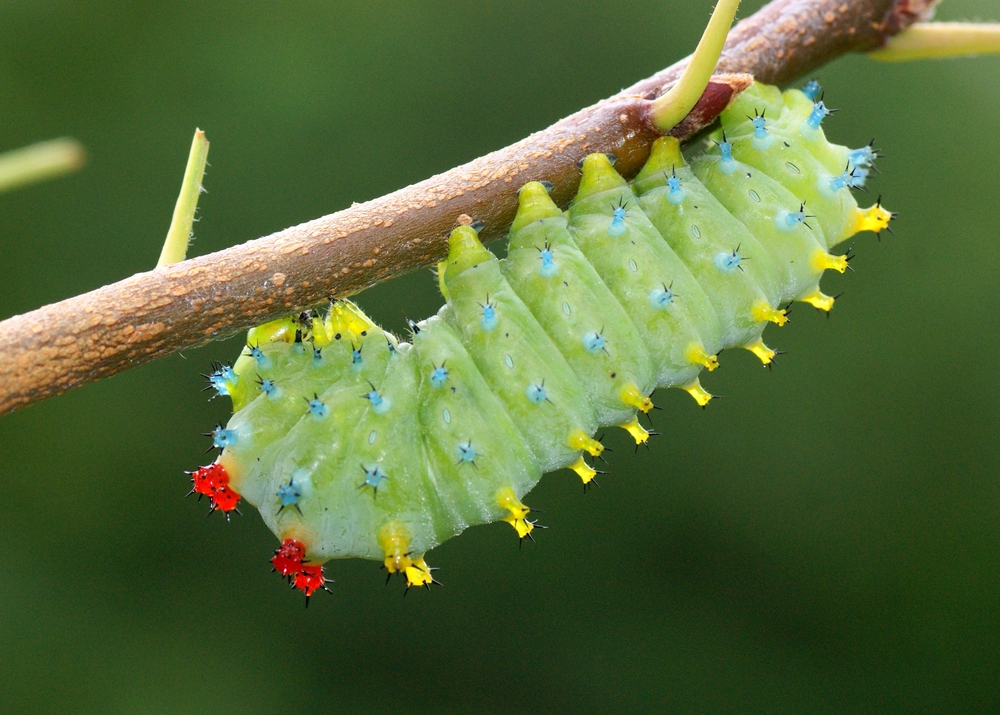
The most dangerous caterpillar in the world is the giant silkworm moth caterpillar, and it lives primarily in South America. While the other caterpillars can kill people through anaphylaxis and complications from underlying health conditions, this caterpillar’s venom is enough to cause death. When people touch them, the spines release the chemicals into their skin. Part of what makes this venom so toxic is its anti-clotting effects. Without the proper antivenom, the sting can cause hemorrhaging and kidney failure. So it’s no surprise that another name for this species is the assassin caterpillar. These caterpillars usually live in forested areas, but they are edging closer to urban settings because of habitat loss, according to a 2023 study. Researchers are looking into the medicinal anti-clotting potential of this potent venom.
Read More: What Are Assassin Bugs, and What Do You Do If You’re Bitten By One?
How to Treat a Venomous Caterpillar Sting
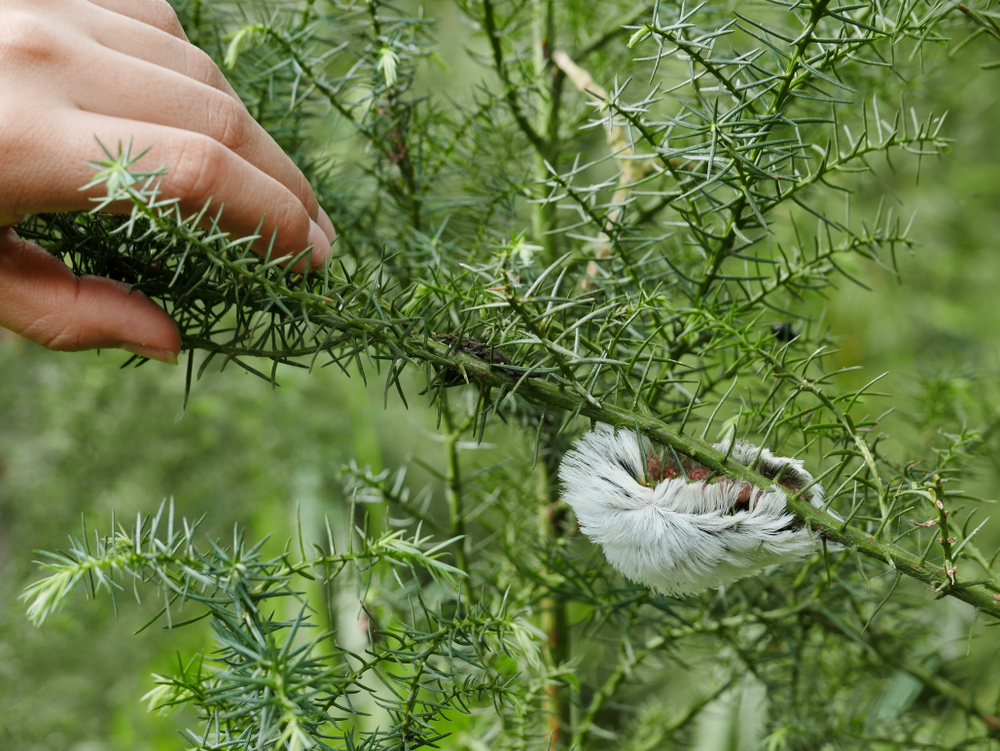
Credit: Shutterstock
Unfortunately, many cases of caterpillar stings involve children like Adrie. This is often because children are curious, less aware of danger, and tend to explore through touch. They are also more likely to suffer more intense reactions because of their smaller body mass and underdeveloped immune systems compared to adults. So warn children to avoid touching creatures they are unfamiliar with. “As a general rule,” states Poison Control, “brightly-colored caterpillars with spines, bristles, or a fuzzy appearance might be venomous and should not be touched.”
Reactions to the stings vary, but they tend to include a rash and swelling that can last for a few hours or a few days. Those who touch their eyes or mouths after interacting with the insect can suffer more intense symptoms like difficulty swallowing, headaches, nausea, and shortness of breath, according to Cleveland Clinic.
To treat the rash, remove the spines left in the skin. Do not use your hands. Instead, gently place a piece of tape over the site, sticky side down, and pull it up. Repeat with fresh pieces until the spines are removed. Then wash the area with soap and water. Apply ice to reduce the swelling. To reduce the itching, you can apply a paste of baking soda and water, a hydrocortisone cream, or aloe vera. If the symptoms don’t subside, seek medical assistance.
Read More: Ever Seen This Creepy Wall-Clinging Moth? Meet the Kamitetep
